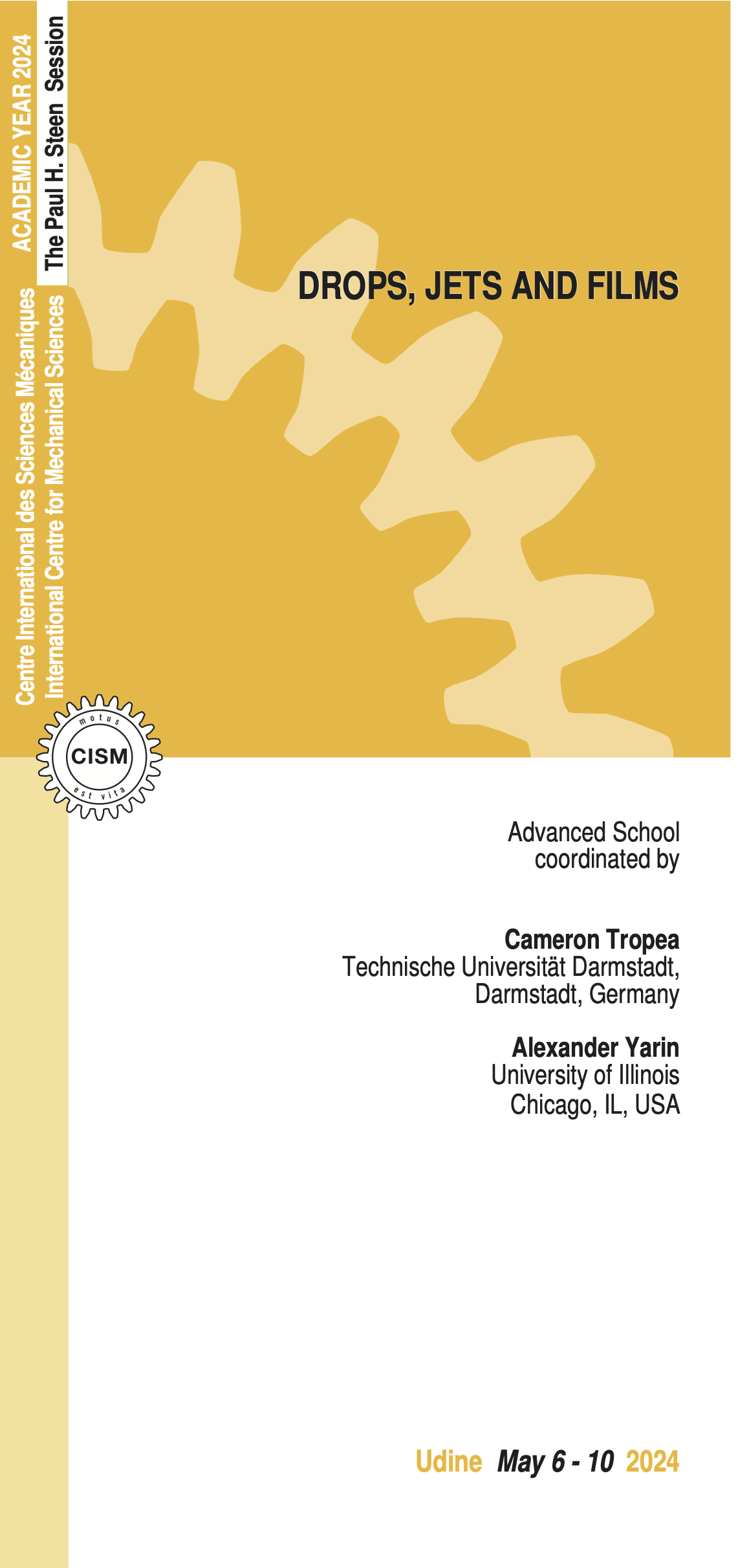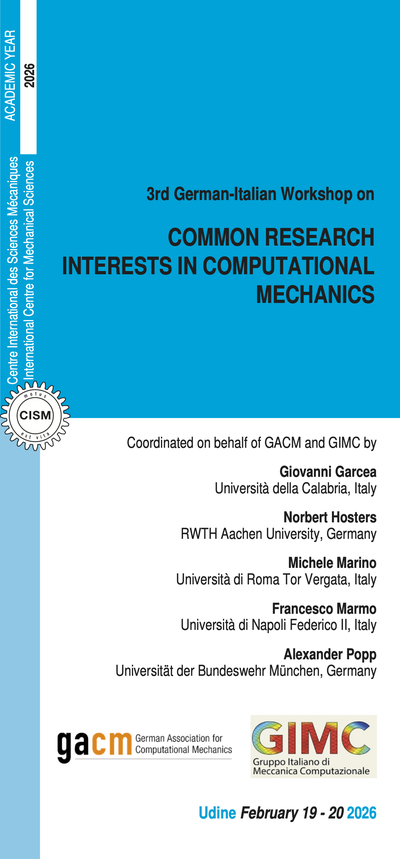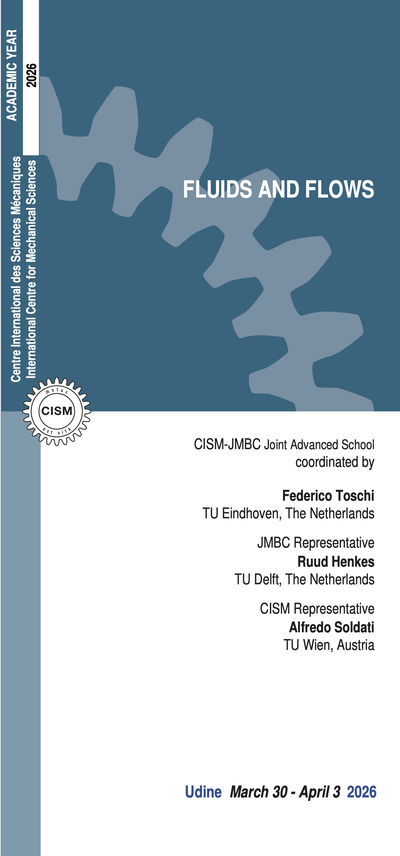Drops, Jets and Films – their generation, stability, mutual interaction, interaction with their surroundings, as well as their associated transport phenomena with the ambient play a vital role in all aspects of our lives, countless industrial processes and indeed, constitute the natural lifeline not only of humans, but also of all living matter. Research abounds in all of the above-mentioned aspects and the aim of the proposed course is to fill this educational gap specifically for researchers in this domain; hence, the course addresses researchers at the graduate and post-graduate level. Typically, these researchers are coming from the disciplines of engineering, physics, mechanics, mathematics or chemistry, but it is not unlikely that also other natural sciences may be relevant, e.g., biology, medicine, and even forensics.
Research on drops, jets and films has a rich theoretical history, a somewhat younger experimental history and in recent times an indispensable anchor in numerical simulations, with its multitude of computational approaches. The lecturers of the proposed course have been selected to mirror this diverse set of methodologies. A further aim of the course is therefore to demonstrate the strengths and limitations of each method and to underline their complementarity. The course is particularly timely for a multitude of reasons, perhaps the most important being urgency. The COVID pandemic is just one example of how the interaction of aerosols with their environment reaches into all aspects of life, up to the societal-political level. However of equal if not stronger importance is the enormous economic impact that drops, jets and films have on our industrial world or on health issues, be it combustion, capillary flows, evaporation, coating, painting, liquid deposition, etc.
A further motivating factor for now addressing this topic is the growing maturity and capabilities in all approaches – theoretical, numerical and experimental, as well as the inter-disciplinarity of the subject which encompasses fluid mechanics with free surfaces, electrohydrodynamics, non-Newtonian fluid mechanics and heat and mass transfer, to mention a few topics relevant in the present course. A brief consideration of computing power, refinement of numerical schemes or the speed and resolution of imaging and illumination technologies make this self-evident. We are now offered a direct glimpse into the physics of these phenomena, which heretofore was unattainable. Why is this so important? This allows us to formulate and validate highly refined physical models of the hydrodynamic and thermodynamic processes involved, which are essential for improving predictive capabilities, as well as for development of ‘reduced’ highly powerful analytical models.
The proposed course attempts to address the above issues at various levels comprising historical retrospection, theoretical foundations, experimental and numerical methodologies, but also demonstrating advantages and disadvantages of different approaches through example research problems and solutions. These examples offered by the lecturers are to be complemented by discussion of individual challenges from participants, ideally in the form of poster presentations. An indication of the topical content is already given by the selected keywords: liquid interfaces, interfacial flow, hydrodynamic instabilities, drop impact, atomization. A more detailed description can be extracted from the list of individual lecture titles.
Tropea, C. "Optical particle characterization in flows." Annual Review of Fluid Mechanics 43 (2011): 399-426.
Yarin, A. L., Roisman, I.V., Tropea, C. Collision Phenomena in Liquids and Solids. Cambridge University Press, 2017.
Yarin, A.L. "Drop impact dynamics: Splashing, spreading, receding, bouncing…." Annual Review of Fluid Mechanics 38 (2006): 159-192.
Plog, J. Wu, J., Dias, Y.J., Mashayek, F., Cooper, L.F., Yarin, A.L. “Reopening dentistry after COVID-19: Complete suppression of aerosolization in dental procedures by viscoelastic Medusa Gorgo” Phys. Fluids 32 (2020): 083111.
Plog, J., Wang, X., Lichade, K.M., Pan, Y., Yarin, A.L. “Extremely-fast electrostatically-assisted direct ink writing of 2D, 2.5D and 3D functional traces of conducting polymer poly(3,4-ethylenedioxythiophene) polystyrene sulfonate- polyethylene oxide (PEDOT:PSS-PEO). J. Colloid and Interface Sci. 641 (2023) 643–652.
Josserand, C., Thoroddsen, S.T. “Drop impact on a solid surface” Annual Review of Fluid Mechanics 48 (2016): 365 - 391.
Aarts, D.G.A.L., Lekkerkerker, H.N.W., Guo, H., Wegdam, G.H., Bonn, D. “Hydrodynamics of droplet coalescence” Physical Review Letters 95 (2005): 164503.
Somsen, G.A., C van Rijn, S Kooij, Bem, R.A., Bonn, D. “Small droplet aerosols in poorly ventilated spaces and SARS-CoV-2 transmission” The Lancet Respiratory Medicine 8 (2020): 658-659.
Monier, A., Huerre, A., Josserand, C., Séon, T. “Freezing a rivulet” Phys. Rev. Fluids 5 (2020): 062301(R).
Tryggvason, G., Scardovelli, R., Zaleski, S. Direct Numerical Simulations of Gas–Liquid Multiphase Flows. Cambridge University Press, 2011.
Josserand, C., Ray, P., Zaleski, S. “Droplet impact on a thin liquid film: anatomy of the splash” Journal of Fluid Mechanics 802 (2016) 775-805.
Lohse, D. “Fundamental fluid dynamics challenges in inkjet printing” Annual Review of Fluid Mechanics 54 (2022): 349-382.
Li, Y., Diddens, C., Segers, T., Wijshoff, H., Versluis, M., Lohse, D. “Evaporating droplets on oil-wetted surfaces: Suppression of the coffee-stain effect” PNAC USA 117 (2020):16756-16763.
5 lectures on: Drop impact; Drop coalescence; Drop formation in simple and complex fluids; Spray formation; Aerosols.
4 lectures on: Spreading dynamics of impacting drops; Retraction and freezing of a water film on ice; Solidification of a rivulet: shape and temperature field.
7 lectures on: The Leidenfrost condition; Growth of respiratory droplets; Droplet evaporation on surfaces; Fluid dynamic challenges in ink-jet printing: I; Fluid dynamic challenges in ink-jet printing: II; Drop evaporation on surfaces: I; Droplet evaporation on surfaces: II.
7 lectures on: Hydrodynamic instabilities; Impact of supercooled drops and ice accretion; Mechanisms of atomization; Spray cooling; Wetting in vehicle external water management; Fundamentals of optics, light scattering and image processing; Optical measurement techniques for drops, jets and films.
7 lectures on: Hydrodynamic instabilities; Impact of supercooled drops and ice accretion; Mechanisms of atomization; Spray cooling; Wetting in vehicle external water management; Fundamentals of optics, light scattering and image processing; Optical measurement techniques for drops, jets and films.
7 lectures on: Drop manipulation by electrowetting for 3D printing; Maxwellian and dielectrophoretic stretching of sessile drops; Electrostatically-assited direct ink writing for additive manufacturing: electrified jets; Metamorphosis of trilobite-like drops on a surface; Drops generating turbulence and flying coronas; Drop formation in forensic and high power applications; Suppression of aerosolization in dentistry and skin surgery.
5 lectures on: Droplet size distribution in corrugated ligaments; Contact line dynamics; Recent advances in VOF methods; Vibrating, sliding and accelerating drops on a surface; Numerical investigation of atomization of high speed jets.
ADMISSION AND ACCOMMODATION
The course is offered in a hybrid format, allowing participants the flexibility to attend either in person or remotely via the Microsoft Teams platform.
Limited spots are available for on-site attendance and will be allocated on a first-come, first-served basis.
The registration fees are:
- On-site participation: 600.00 Euro + VAT*
Includes a complimentary bag, five fixed menu buffet lunches, hot beverages, downloadable lecture notes.
Deadline for on-site application is April 6, 2024.
- Live Streaming Online Participation: 250.00 Euro + VAT*
Includes downloadable lecture notes.
Deadline for online application is April 24, 2024.
Application forms should be submitted online through the website: http://www.cism.it.
A confirmation message will be sent to accepted participants.
Upon request, a limited number of on-site participants can be accommodated at CISM Guest House at the price of 35 Euro per person/night (contact: foresteria@cism.it)
* where applicable (bank charges are not included) - Italian VAT is 22%.
CANCELLATION POLICY
Applicants may cancel their registration and receive a full refund by notifying the CISM Secretariat in writing (via email) no later than:
- April 6, 2024 for on-site participants (no refunds after the deadline);
- April 24, 2024 for online participants (no refunds after the deadline).
Cancellation requests received before these deadlines will be subject to a 50.00 Euro handling fee. Incorrect payments are also subject to a 50.00 Euro handling fee.
GRANTS
A limited number of participants from universities and research centres who do not receive support from their own institutions can request a waiver of the registration fee and/or free lodging.
Requests should be sent to the CISM Secretariat by March 6, 2024, along with the applicant's curriculum vitae and a letter of recommendation from the head of the department or a supervisor confirming that the institute cannot provide funding. Preference will be given to applicants from countries that sponsor CISM.





